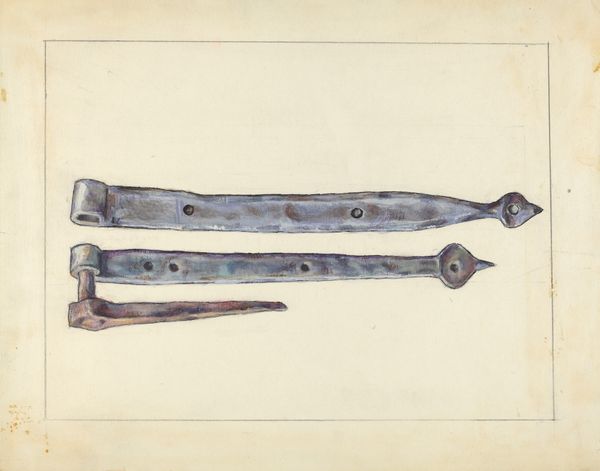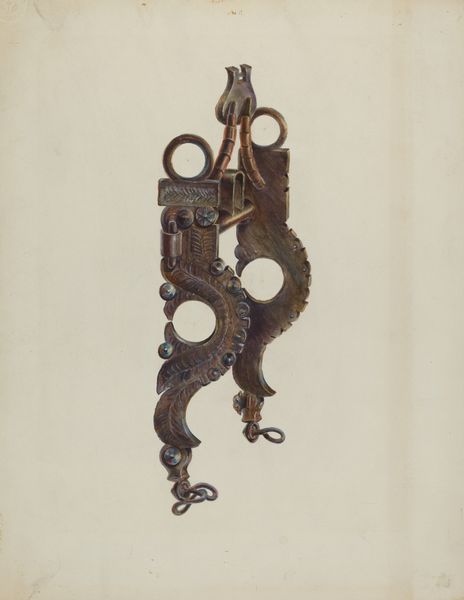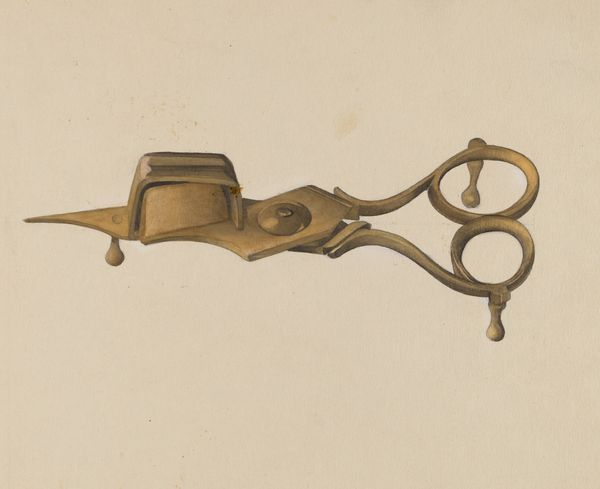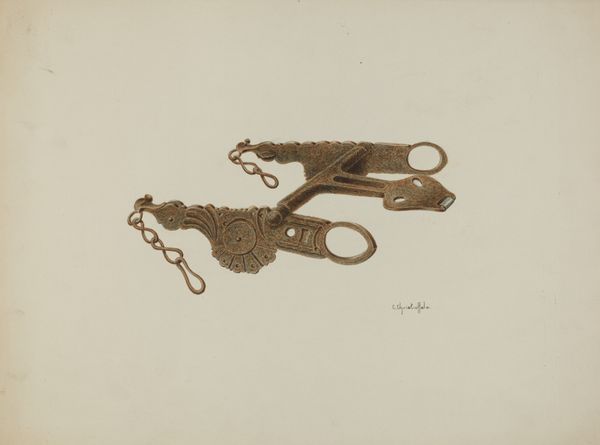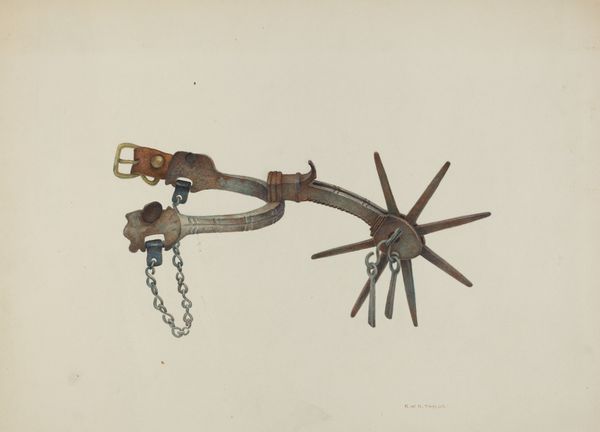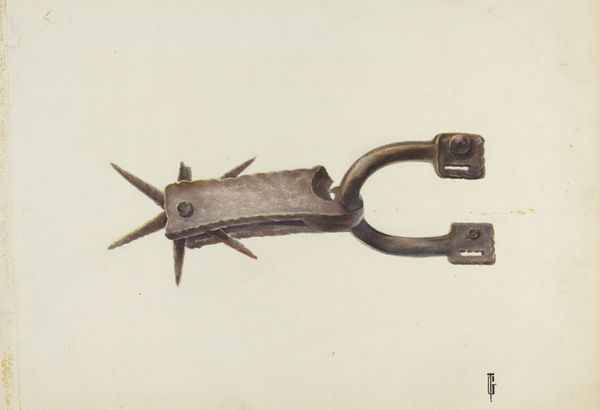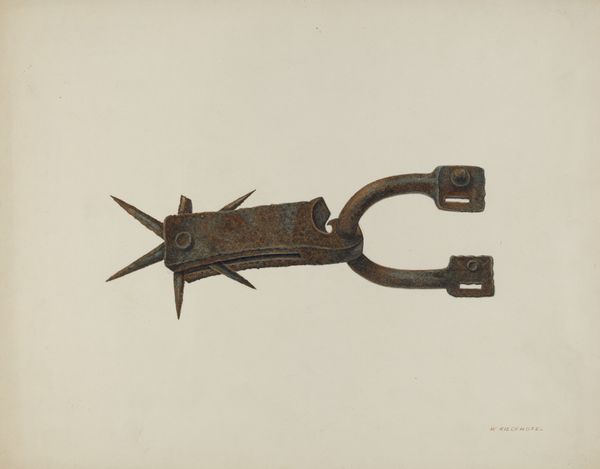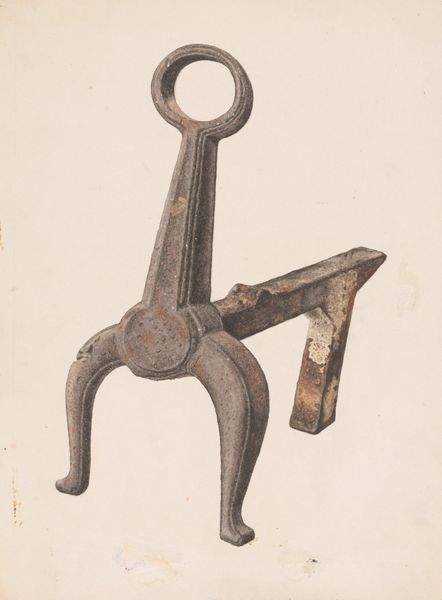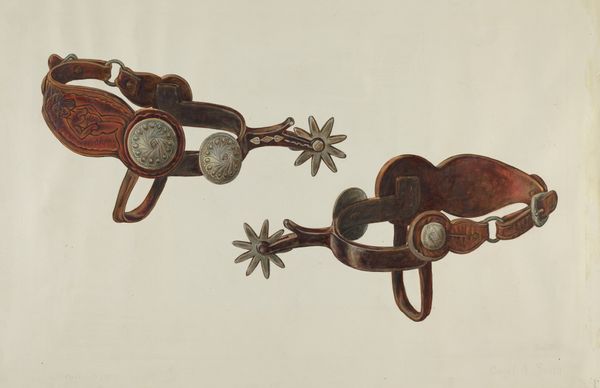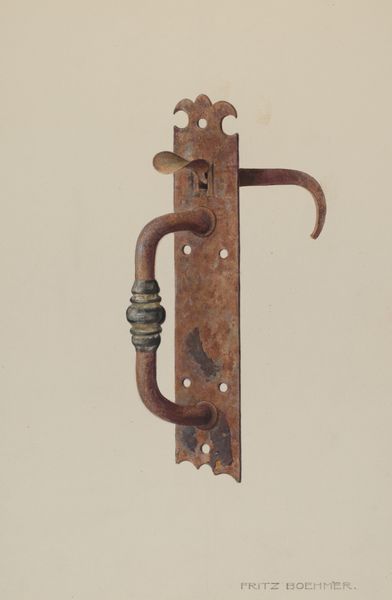
drawing, watercolor
#
drawing
#
water colours
#
sculpture
#
watercolor
#
watercolor
Dimensions: overall: 24 x 35.7 cm (9 7/16 x 14 1/16 in.)
Copyright: National Gallery of Art: CC0 1.0
Gerald Transpota’s watercolor work, Wrought Iron Bit, presents us with a detailed study of an object deeply entwined with human and animal labor. Born in 1855, Transpota lived through a period of immense industrial and social change, including shifts in labor practices and the evolving role of animals in agriculture and transport. This image of a horse bit invites reflection on the relationship between humans and animals. Historically, such tools symbolize control and the harnessing of animal strength for human endeavors. We might consider the cultural implications of this relationship, thinking about power dynamics, ethical responsibilities, and the emotional aspects of working alongside animals. Transpota's careful rendering encourages us to consider the individual craftsmanship involved in creating such an object, in contrast to the mass-produced items of the burgeoning industrial age. This artwork asks us to consider the value and meaning we ascribe to both labor and the tools that define it.
Comments
No comments
Be the first to comment and join the conversation on the ultimate creative platform.
